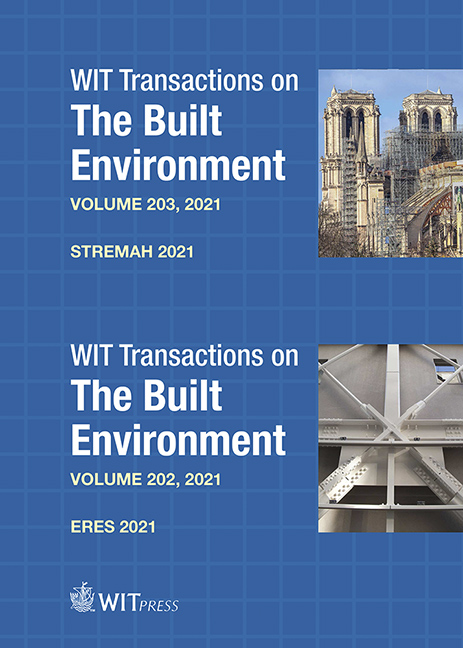BUILT HERITAGE IN THE 2020 EARTHQUAKES IN ZAGREB AND PETRINJA, CROATIA: EXPERIENCE AND CONSEQUENCES
Price
Free (open access)
Transaction
Volume
203
Pages
11
Page Range
161 - 171
Published
2021
Size
4,040 kb
Paper DOI
10.2495/STR210141
Copyright
Author(s)
JOSIP GALIĆ, DAVOR ANDRIĆ, LUCIJA STEPINAC, HRVOJE VUKIĆ
Abstract
Croatia is a seismically active country, with recorded devastating earthquakes – among which is the Zagreb earthquake of 1880, when many buildings have been destroyed. Since that time 140 years have passed, and little has been done to prepare the city and its buildings for the return of a similar event, last year’s quake found Zagreb rather unprepared. The same year an even more massive earthquake hit Petrinja. An overview of observed damage caused directly and by the aftermaths of the earthquakes in Croatia: Zagreb in March and Petrinja in December 2020 is given. Most of the damage is recorded on historical buildings with brick walls and wood floors and roofs, but some damage on contemporary structures is also noted. Most of the damage is found on old buildings; most of them are part of Zagreb historical centre and are in the protected heritage area or are listed as protected heritage buildings. These include damage like cracks in walls, collapse of unsupported walls, and parts of architectural details, chimneys, gable walls as well as damaged or collapsed vaulted ceilings, wood floor structures and roofs. Buildings of the modern period have sustained damage as well. Several typical types of damage stand out: infill walls of concrete frames damaged due to different flexibility, columns damaged mostly due to insufficient reinforcement, and steel to concrete connection details failure. Main problems for reconstruction and retrofitting are of financial nature, cultural asset status of large number of damaged buildings, scale, and complexity of some buildings mostly in Zagreb, and sustainability of settlements in Sisak-Moslavina County in case of Petrinja earthquake. Based on these observed phenomena, a set of appropriate approaches to the post-earthquake renewal is proposed including techniques for retrofitting depending on the desired level of quake proofing.
Keywords
earthquake, Zagreb, Croatia, Petrinja, masonry, damage, heritage




